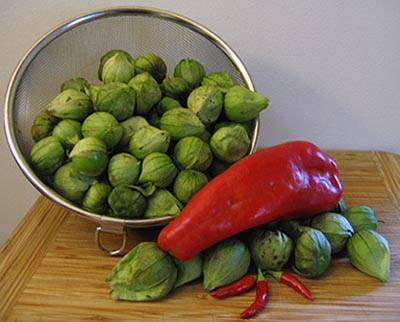My mother’s favorite season was fall; no doubt it was because the first freeze allowed her to stop canning and freezing and not feel guilty about it. A child of the Great Depression, her great shame was wasting food.
Each spring when my father would go to the quarry across the state line to get gravel for the farm’s driveways, she would enlist my brother, sister, and me in getting rid of past date food from the basement pantry. Mind you this wasn’t food she had purchased, but that she had grown with our often less than enthusiastic help. We set up a bucket brigade, emptying canning jars and plastic freezer containers into pails on the old Formica table, handing them up the stairs, and running them outside to the compost pile at the corner of the five-acre garden. “Empty them BEHIND the pile. I don’t want your father to see,” she called, head in the freezer, voice muffled by the scores of pale blue plastic containers that remained.

Wasting food may have been her great shame, but not having enough was her great fear. Her stepfather had abandoned the family when she was a child, causing my grandmother to place my mother and two of her sisters in a children’s home until she was able to make enough money to feed them.
My mother never forgot this and as an adult there was little that she didn’t can or freeze— giardiniera, pasta sauce, salsa, ratatouille, pickled beets, bread and butter pickles, lime pickles, grape juice, apple sauce, mint jelly, corn on the cob, apple pie, and strawberry jam. The list was endless. The only thing she didn’t make was apple jelly. “I just can’t bring myself to can something that looks like it belongs in a handkerchief,” she explained.
Each fall I think of her as I struggle with the end of season excess. This year the season is running late. So, I find myself still struggling in October as jars of freshly canned chow-chow and blackberry-chile barbecue sauce line the cupboard. In a normal year, they would be flanked by jars of pasta sauce, but tomatoes weren’t as plentiful this year. Chiles on the other hand, thrived. Not only are they available in quantity, they are packing a wallop. Anaheims are bordering on jalapeno heat and serranos are downright painful.
Normally, I would be turning them into pickled jalapeno relish and chile sauce. But given their heat, the safest thing to do this year, which doesn’t even require canning, has been to simply roast Anaheims and jalapenos in the broiler until the skins blister. Then, cool them, seed them, and puree them with some roasted garlic, salt, and citric acid powder, which is available in bulk from Common Ground.
The resulting mixture can be kept in the fridge for several weeks. Or you can place tablespoon-sized dollops of the puree on a cookie sheet, freeze them, and transfer them to a zippered freezer bag where they’ll last through the winter.
The chile-garlic puree is great on quesadillas, or stir a bit of it into goat cheese and heat for a quick chile con queso. Combine some of the puree with cooked tomatillos for salsa verde. Or, add a bit to sour cream or Greek yogurt to top zucchini pancakes or latkes. If you are struggling with a bunch of end of season cucumbers, blend enough of them to equal four to five cups of cucumber puree. Don’t worry about peeling them if they are organic, but do remove the seeds from non pickling varieties with a spoon before blending. To the cucumber puree, add a cup of cottage cheese, a half cup of Greek yogurt, one to two tablespoons of olive oil, a pinch of salt, and a generous dollop of chile puree and blend again. The result will be a cucumber soup with a kick.
While this takes care of chiles, there’s still the matter of basil. The dry summer has made it super fragrant which makes me incapable of allowing it to simply freeze outdoors. Despite this, I can’t seem to muster the time or enthusiasm to make pesto. So, I pick a bouquet-sized bunch, wash it, and let it dry in a colander. Then I heat a couple of cups of olive oil in a large, heavy Dutch oven and simmer it stems and all. After thirty minutes, I shut off the heat. When the oil cools, I strain it, and reserve the leaves in a container in the fridge for stir fries. The oil can be used for salad dressings, basil-flavored mayonnaise, or sautéing vegetables. Or, give it to a foodie friend as a gift.
Speaking of gifts, you can preserve eggplant in olive oil in your fridge for up to a year. Or, turn it into caponata that you can freeze and use during the winter as an appetizer or as a sauce for pasta.








